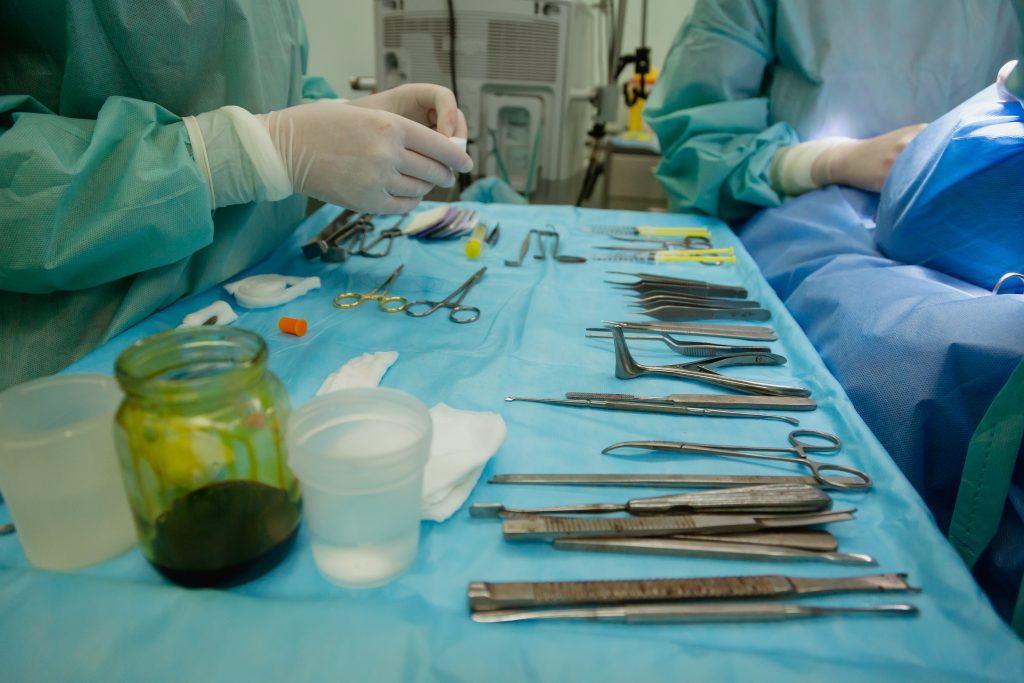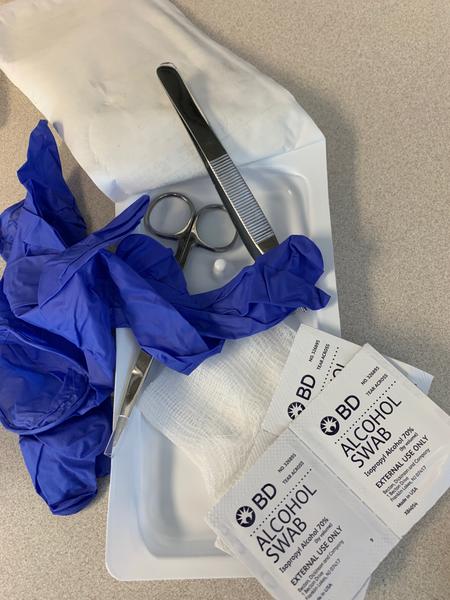Hospitals Help Patients But Not the Planet. Here’s How to Change That.
American hospitals can produce disproportionate amounts of waste and carbon dioxide. 101.9 WDET took a look at what hospitals and patients can do to change that.

Healthcare facilities in the United States dispose of 4 billion pounds of waste annually, making them the second largest contributor to landfills after the food industry.
Interested in making your world more sustainable?
101.9 WDET wants to help. Sign-up to be contacted by our editorial team on the stories you want to hear.
Emily Johnson is a medical student at the University of Michigan Medical School working to address the problem of waste in healthcare settings.
“We produce almost twice as much CO2 per person” compared to other health systems. – Emily Johnson, medical student
“When you compare us to other hospitals systems in Canada or the United Kingdom, we produce almost twice as much CO2 per person as those healthcare systems,” says Johnson, who first became aware of this issue during medical school.
101.9 WDET’s Annamarie Sysling spoke with Johnson about sustainability issues hospitals face, and potential solutions happening today.
Click on the player above to hear medical student Emily Johnson talk about hospital’s environmental stewardship and read more below.
Where’s the waste?
Johnson points to a number of areas hospitals can engage to reduce consumption.
Anesthetic gases
Problem: Commonly used anesthetics like desflurane are 1500 times more powerful at trapping heat than carbon dioxide.
Why it matters: More than 95 percent of gases that are administered to patients are never metabolized and end up in the atmosphere instead.
Solutions: Alternatives can be effective options that trap heat at a much lower rate.
Related: 5 Tips For a More Sustainable Wardrobe
Reprocessed equipment
Problem: Single Use Devices are used frequently in the operating room.
Why it matters: After a single use, this equipment ends up in the trash. This adds to mining of additional metal and the production of new plastic, ultimately creating waste for a landfill.
Solutions: There are third party companies that take these single-use devices and decontaminate, sterilize and repackage these tools to sell back to hospitals at a discounted rate.

Surgical kits
Problem: “Often these kits are standardized and many of the tools and materials go unused,” says Johnson.
Why it matters: Once the kit has been opened, standard protocol is that all supplies must be used or discarded after the procedure.
Solutions: Instead of throwing the unused parts of the kit into the trash, Johnson says some hospitals are sending them to healthcare facilities in developing countries. Operation Green and Med Share are two examples dedicated to this. Johnson says that surgical departments can evaluate these kits to keep them as efficient as possible by removing items that typically go unused. This saves from unnecessary carbon emissions and water usage and makes tray costs cheaper.
Biohazard waste incineration
Problem: “Operating rooms produce a lot of biohazard waste,” says Johnson. This waste means that something — typically surgical tools and gauze — has been contaminated by bodily fluids, and to protect the people who handle trash, it must be incinerated before it can be disposed.
Why it matters: This is harmful because incineration produces a toxic gas called nitrous oxide, which is a potent greenhouse gas.
Solutions: Up to 90 percent of waste that is placed in biohazard containers is non-hazardous and does not require incineration. This is why Johnson says it’s so important that healthcare employees spend just a little bit more time sorting waste and removing things that are not biohazard waste, so that we don’t end up incinerating more than we need to.
How can I take action?
Ultimately, Johnson says that “making sustainability a priority is something hospitals need to do.”
She notes that hospital decision makers have a lot of competing priorities like the safety of patients, financial stability and innovation. But ultimately if we — the patients — continue to push for greater sustainability, it will be in the healthcare industry’s best interest to follow suit.
Here are some local and national hospitals working to increase sustainability. If you don’t see your healthcare provider on the list below, try calling your doctor’s office and asking for a corporate email or phone number to submit a comment or question.
Local
Ascension St. John’s Environmental Stewardship Program
Contact Ascension St John about their sustainability efforts here.
“Sustainability programs save money and create value. Cost avoidance has been documented in the energy efficiency and medical device reprocessing programs – two initiatives currently tracked in the Environmental Stewardship Program.”
Beaumont Health System’s Green Team
Contact Beaumont with a question or concern about sustainability here.
“The Green Team at Beaumont Hospital, Royal Oak, is comprised of 700 employees who volunteer their time to implement cost-effective solutions that reduce waste, conserve energy, educate co-workers on conservation and direct them to educational resources on environmental issues.”
University of Michigan Medicine
Contact Michigan Medicine’s Sustainability Coordinator here.
“Environmental stewardship at Michigan Medicine is a commitment to conducting business in an efficient environmentally-friendly and cost-effective manner. Through education and cooperation with the University of Michigan and national and local regulatory agencies, Michigan Medicine has become a nationally recognized leader for implenting and continuing to improve upon its environmentally-friendly practices.”
National
Practice Greenhealth
“Practice Greenhealth is the leading membership and networking organization for sustainable health care, delivering environmental solutions to hospitals and health systems across the United States.”
Kaiser Permanente
“In 2016, Kaiser Permanente adopted an ambitious set of environmental goals to guide the organization for the decade ahead. These goals have raised the bar on environmental responsibility, not just for Kaiser Permanente but for all health care organizations.”
Mayo Clinic
“Recognizing the linkage between environmental health and public health, Mayo Clinic is committed to fiscally responsible environment protection practices to benefit the health of our patients, staff, and communities.”
Up next
Ecological Grief: Learning to Deal with Climate Change and Species Loss

With extreme weather patterns becoming the new normal, species loss, climate devastation and expert voices telling us that in the not too distant future many of us will perish, researchers are starting to see a new phenomenon emerging: Ecological grief.
It’s the mental anguish felt over our changing world and the sense that society is losing aspects of the environment we can not get back. Read more
Support the news you love.
Here at WDET, we strive to make our journalism accessible to everyone. As a public media institution, we maintain our journalistic integrity through independent support from readers like you. If you value WDET as your source of news, music, and conversation, please consider making a gift today. Even $5 a month helps!
